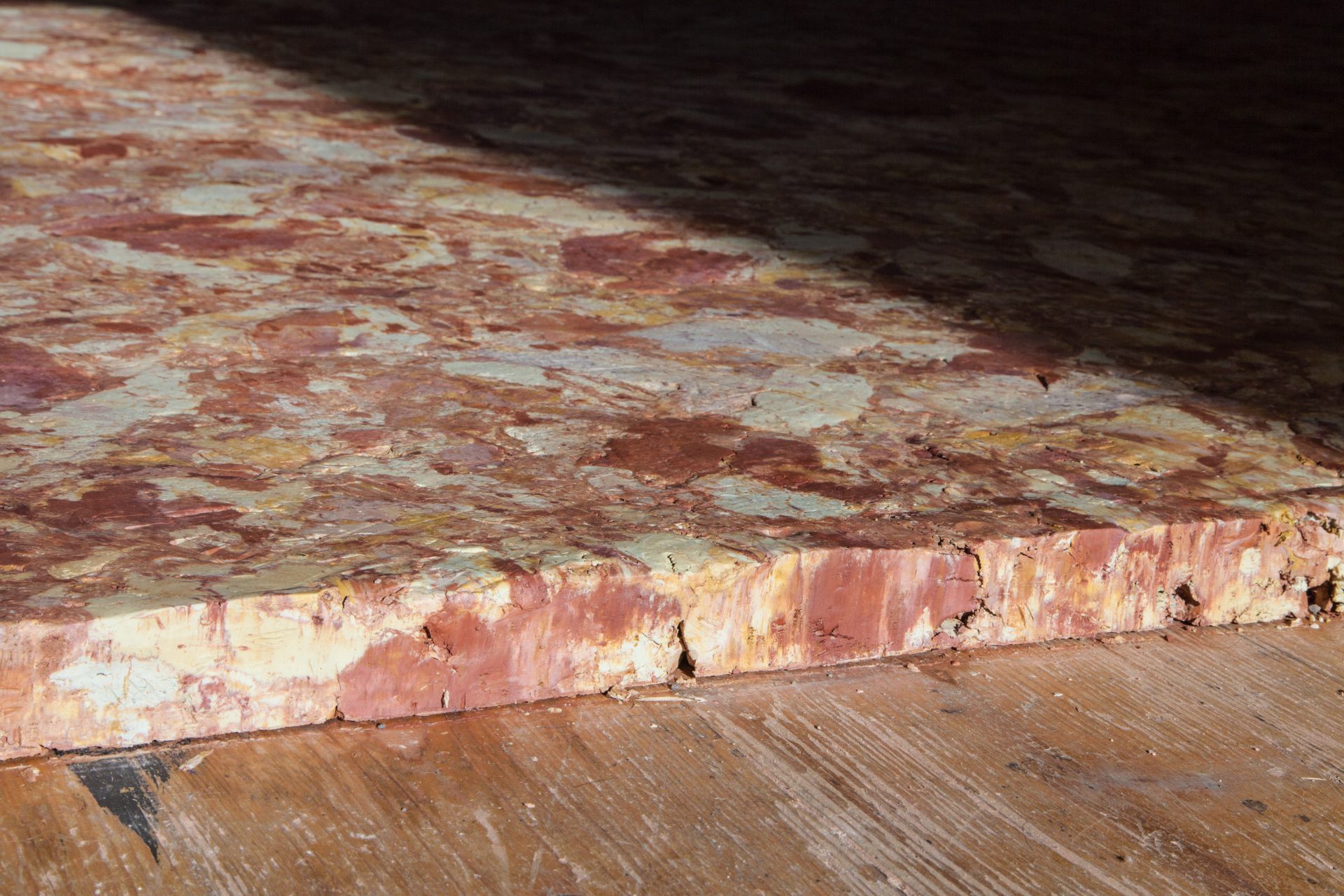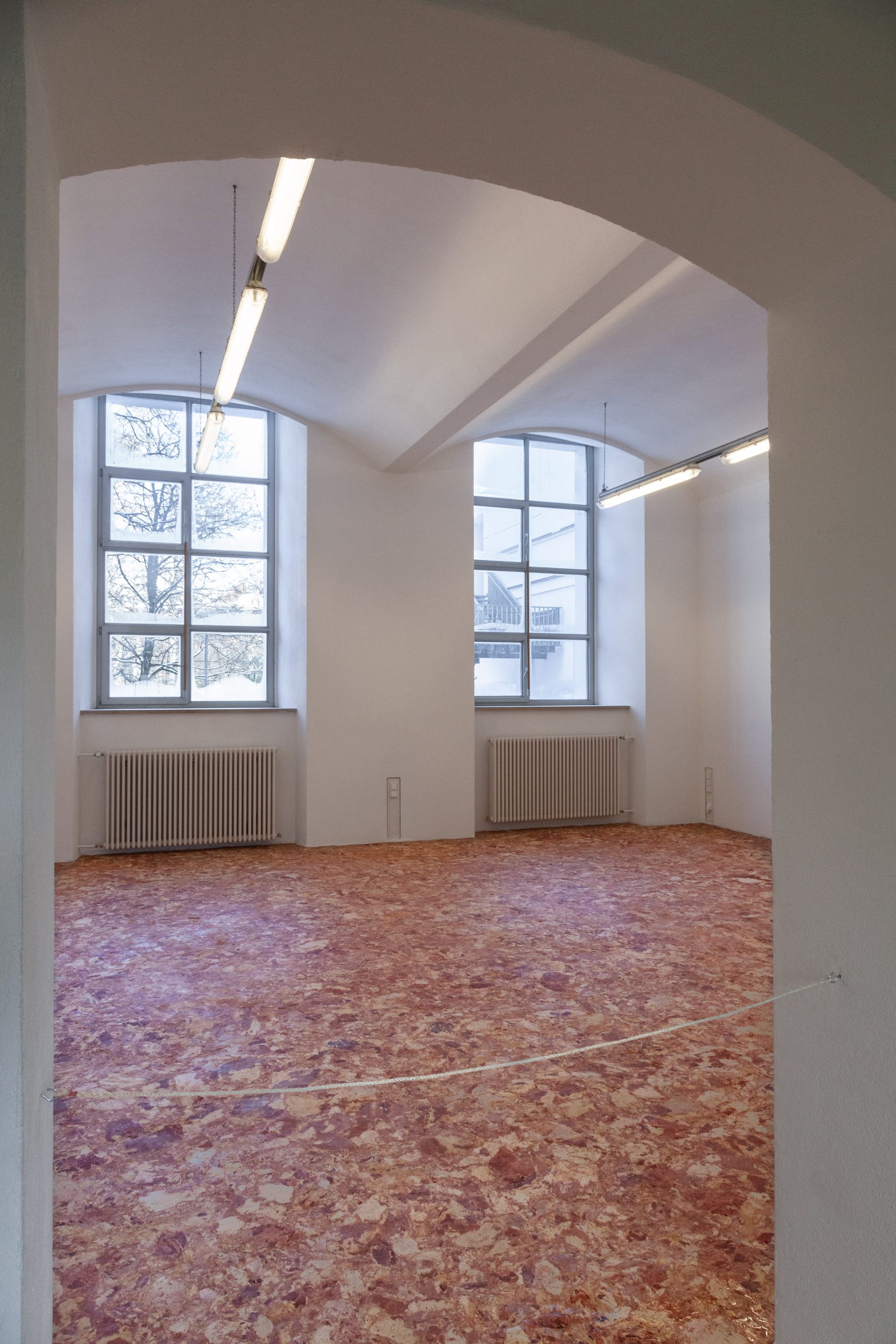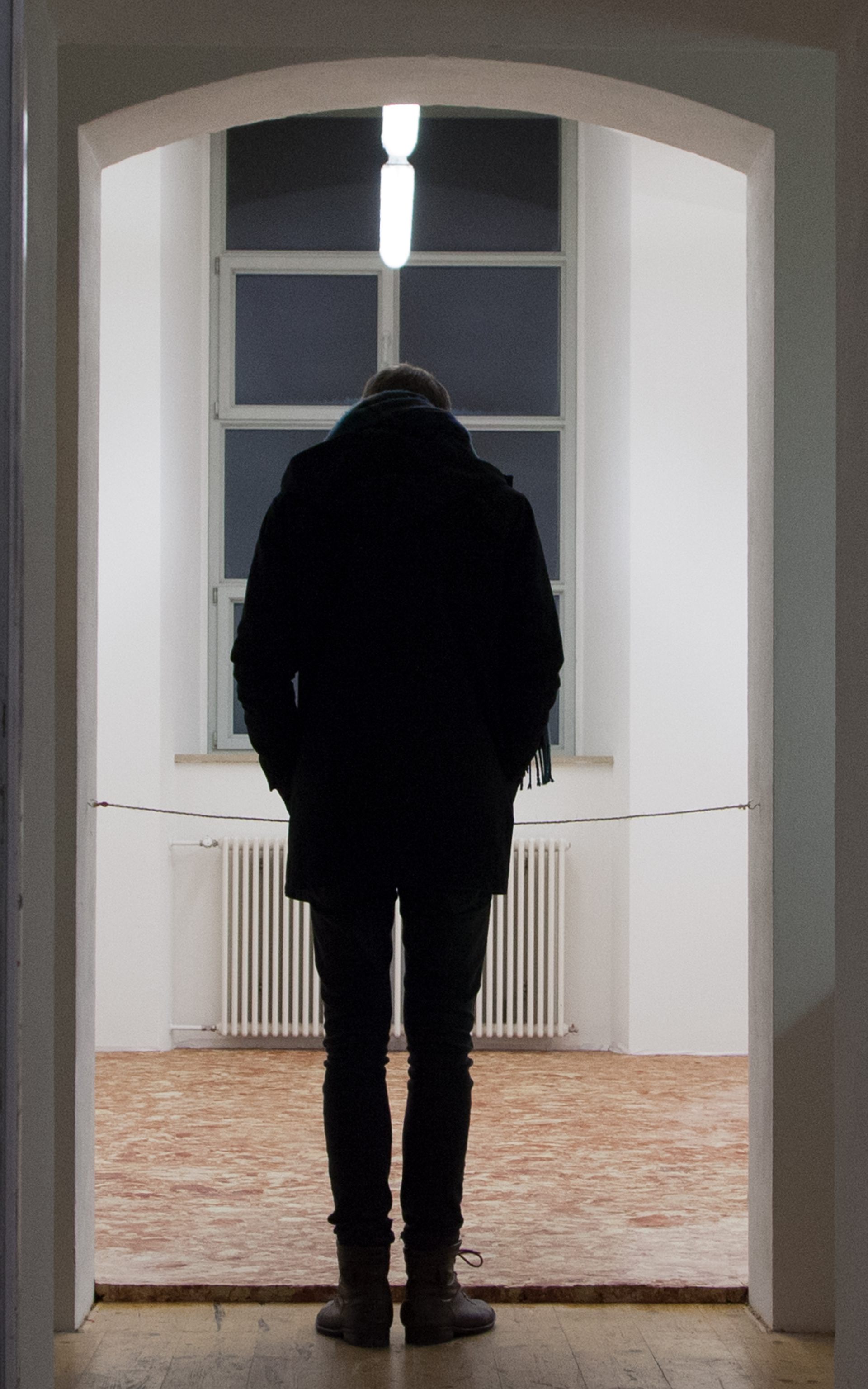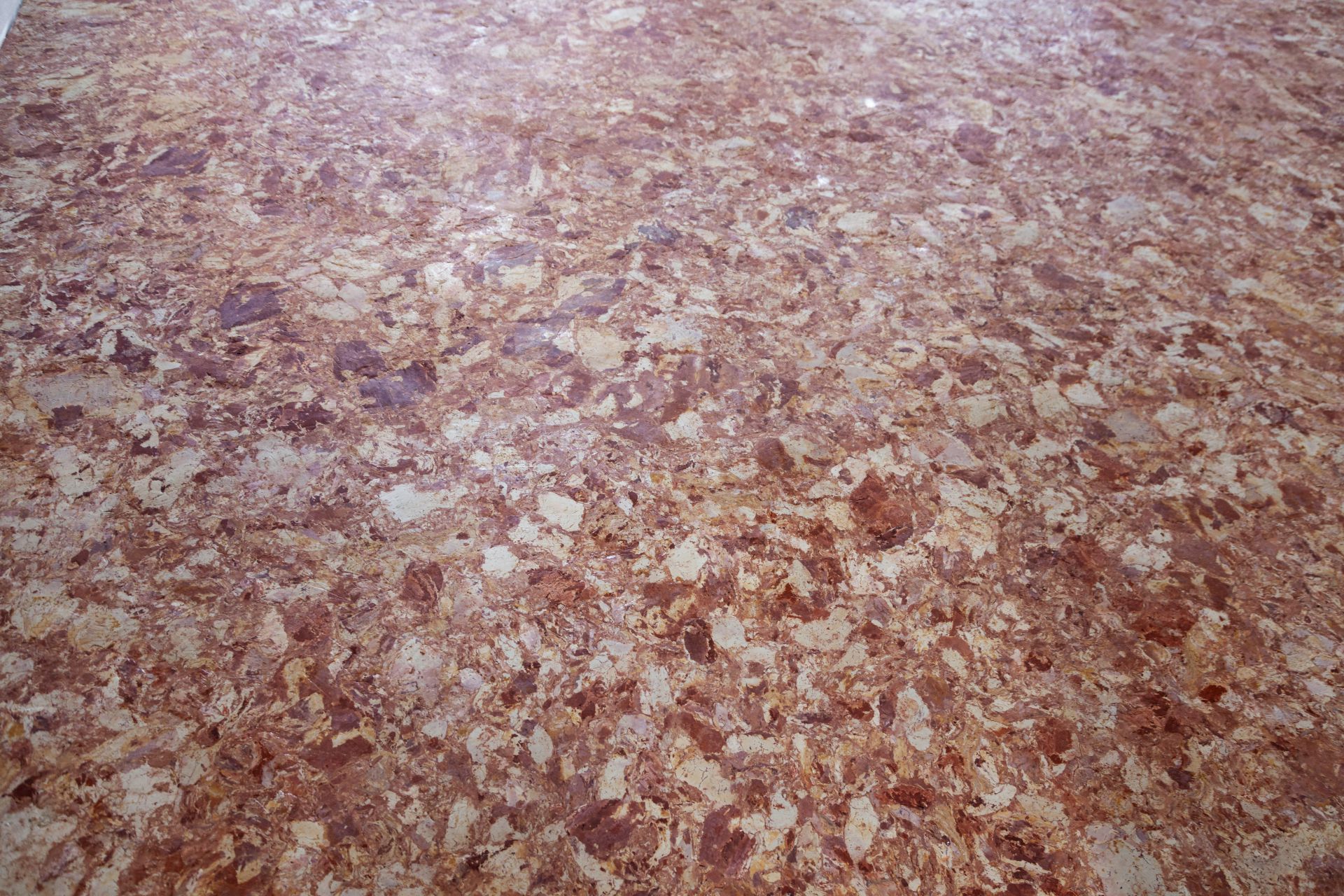The floor of the exhibition space is covered with 3,5 metric tonnes of fresh, moist clay. The natural marbling of the thousand of years old material is clearly visible. Earth taken directly from the clay pit is given its new form through manual processing to form an overall surface. The viewer is denied access to the 50 square meter room and the material remains a secret. Associations with marble arise, while on the other hand, one experiences an organic, ephemeral impression, such as when looking at meat. Earthy, damp smells and the seamless processing of the inaccessible surface provide subtle clues to its actual materiality.
From the Series Clay Studies:
In Clay Studies, Simone Kessler has concentrated entirely on the material clay, aiming to create something temporary, something that lives and continues to develop. The starting point for her series of works was her piece Boden, a 50-square-meter room with a smooth floor made of earth-moist clay. The artist had brought 3.5 tons of raw material by trailer from a Hessian clay pit to the exhibition space and spread it out on the floor in painstaking manual labor until a flat surface was created. In the exhibition, the clay surface could be viewed but not walked on. Kessler was primarily concerned with the spatial effect of the material and the confrontation with its transformation process. After the exhibition, she tore the work down: crushed to powder and mixed with water, the clay became a mass with homogeneous color and new suppleness again. It serves as a raw material for subsequent works. The objects created from the recycled clay are once again entirely dedicated to the material and its processes of change. The unpreservable state of the material is an important subject in the series Clay Studies.




